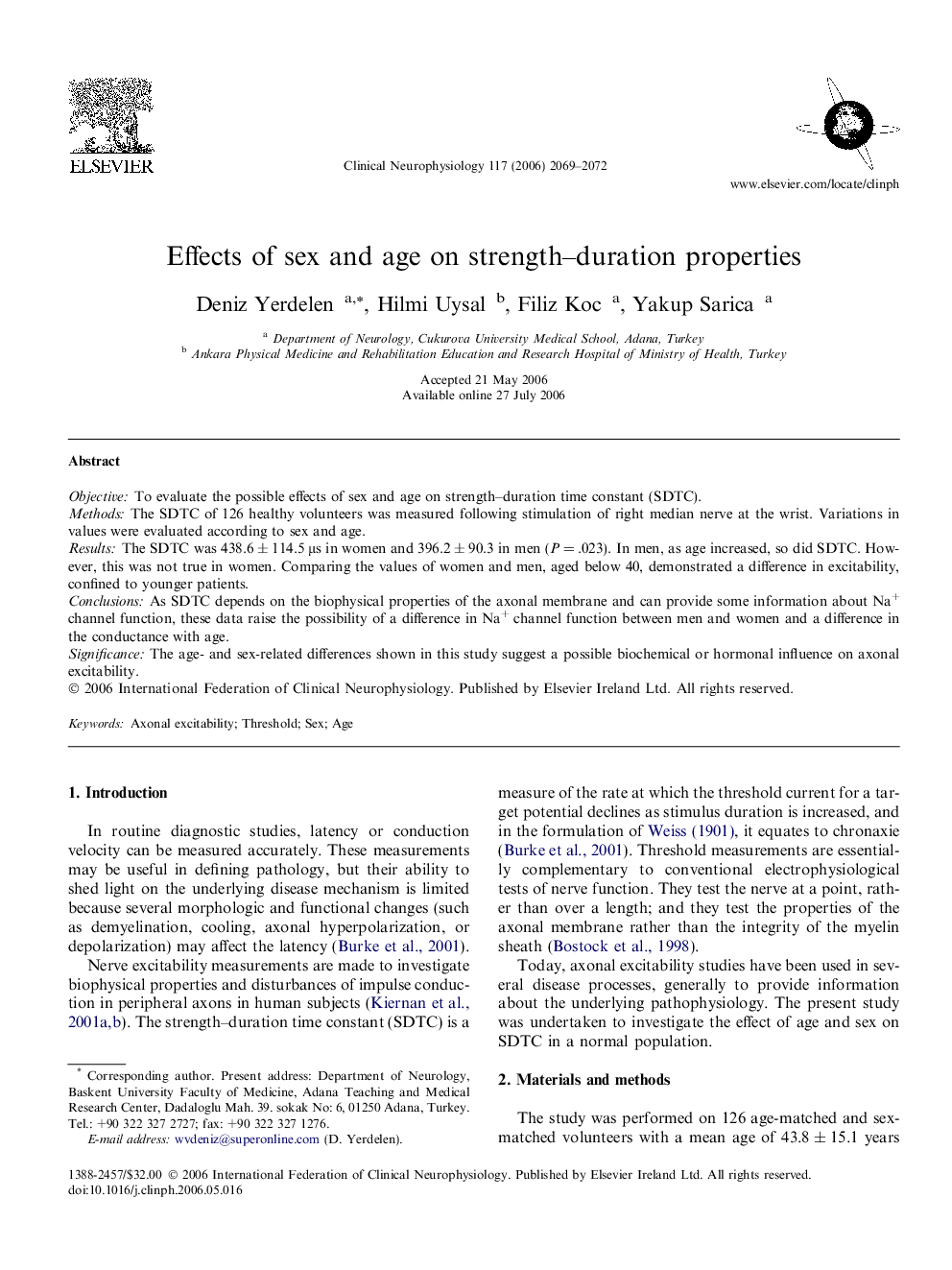| Article ID | Journal | Published Year | Pages | File Type |
|---|---|---|---|---|
| 3047822 | Clinical Neurophysiology | 2006 | 4 Pages |
ObjectiveTo evaluate the possible effects of sex and age on strength–duration time constant (SDTC).MethodsThe SDTC of 126 healthy volunteers was measured following stimulation of right median nerve at the wrist. Variations in values were evaluated according to sex and age.ResultsThe SDTC was 438.6 ± 114.5 μs in women and 396.2 ± 90.3 in men (P = .023). In men, as age increased, so did SDTC. However, this was not true in women. Comparing the values of women and men, aged below 40, demonstrated a difference in excitability, confined to younger patients.ConclusionsAs SDTC depends on the biophysical properties of the axonal membrane and can provide some information about Na+ channel function, these data raise the possibility of a difference in Na+ channel function between men and women and a difference in the conductance with age.SignificanceThe age- and sex-related differences shown in this study suggest a possible biochemical or hormonal influence on axonal excitability.
